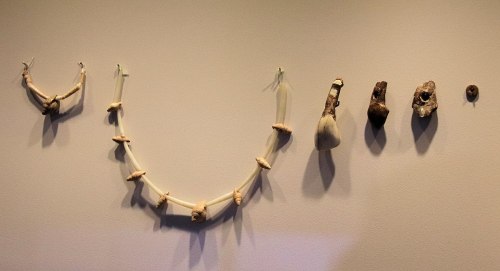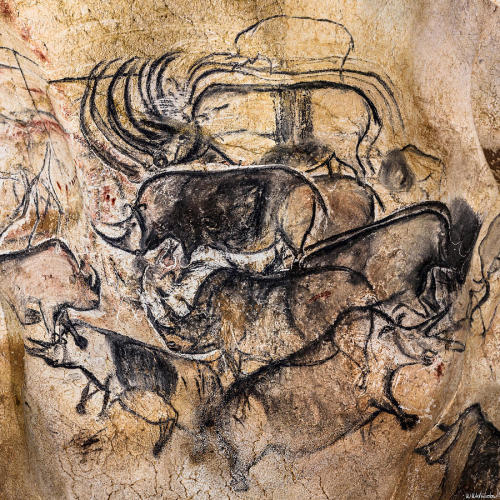AurignacianThe Aurignacian period is the earliest European culture in modern human history. The Auri
AurignacianThe Aurignacian period is the earliest European culture in modern human history. The Aurignacian era lasted from 43,000 to 26,000 years ago and is associated with the early Homo Sapiens migration towards Europe. The modern humans of this time period were also the last ones to have encountered a Neanderthal. Most of the classic ‘prehistoric items and art’ are from this time period. This includes: most of the classic cave art, such as the art in the Aurignac cave in France (that is where the name Aurignacian comes from), the countless venus statues that have been found all over Europe, carvings of mammoths and bears made from ivory and wood, flutes, more diverse tools such as needles and tools made from antler and bone.Since the Aurignacian period is quite large, it has been divided into subperiods: the Proto-Aurignacian (43,000-37,000), the Aurignacian (37,000-33,000) and the Late-Aurignacian (33,000-26,000). Each of these subperiods has its own distinctive technologies influenced by both technological proces and climate change. Art is perhaps the most defining trait of the Aurignacian, as the Aurignacian is the first time period during which modern humans developed a distinct taste for art. These artworks do not only include cave paintings but handcrafted objects as well. One particulary fascinating object is the Löwenmensch figure which has been found in the Hohlenstein-Stadel cave in Germany. The statue is about 40,000 years old and is the oldest representation of an anthropomorphic figure. We do not know the purpose behind the creation of this statue, perhaps it was just art or it served a deeper spiritual purpose, perhaps a representation of a shaman in trance. Musical instruments also started appearing during this time period, the most common instrument found is the bone flute, this does not mean that the flute was the most popular instrument, bone flutes are just more easily preserved. We can only imagine what kind of tunes our earliest European ancestors would have played on these flutes. The tools used by early humans also started to change during the Aurignacian period. Before this time period, almost all tools were made of stone, flint. It was during the Aurignacian period that tools made of bone and antler slowly started to appear. These bone and antler tools also gives us some insight into the animals that were hunted by these early modern humans, it seems that deer and reindeer were their primary prey, this would continue to be the case until the Magdalénien culture 18,000 years ago. Here are images of:An Aurignacian shaman by Libor Balák,Aurignacian bone tools,Aurignacian Jewelry,Löwenmensch figure,Venus of Willendorf figure,Chauvet cave art, -- source link
#europe#prehistory#paleolithic#aurignacian





